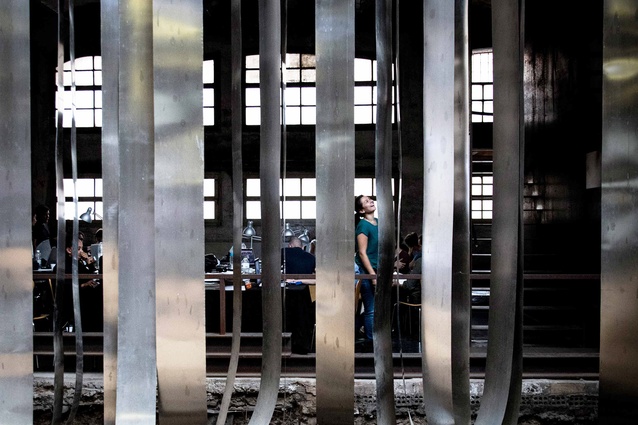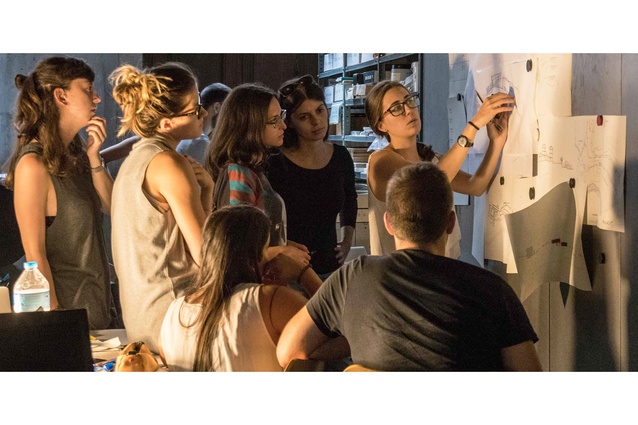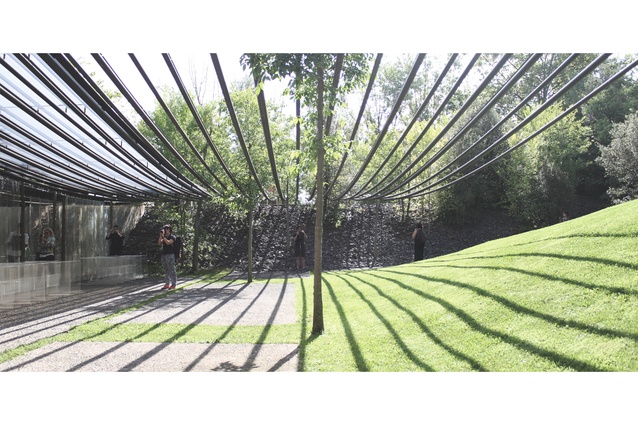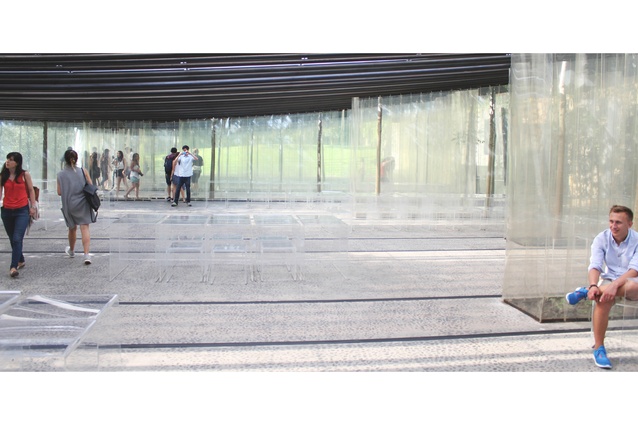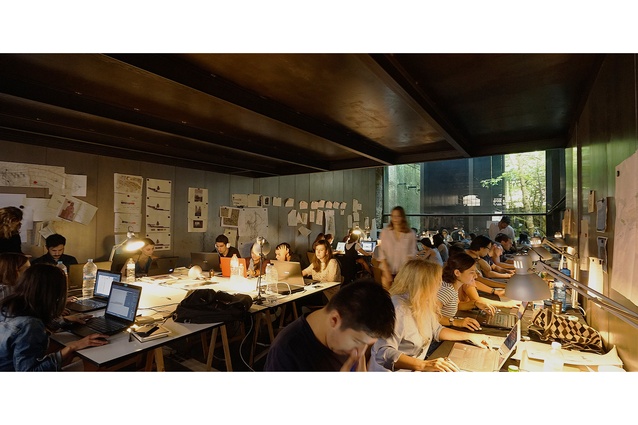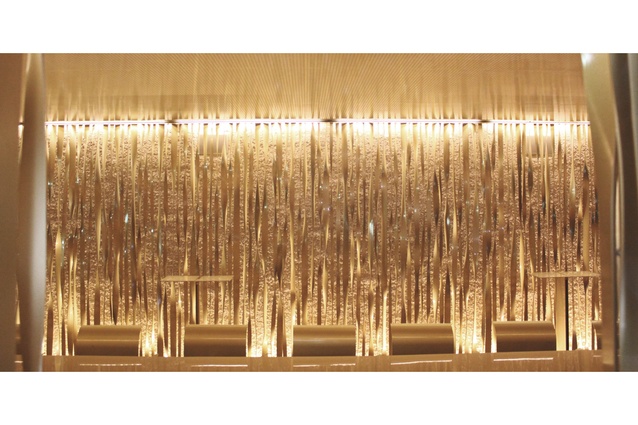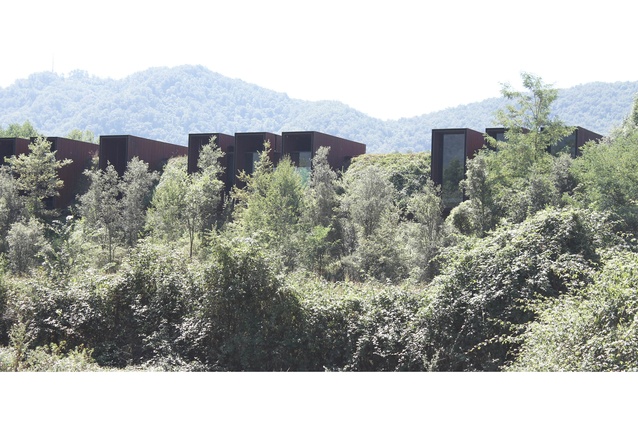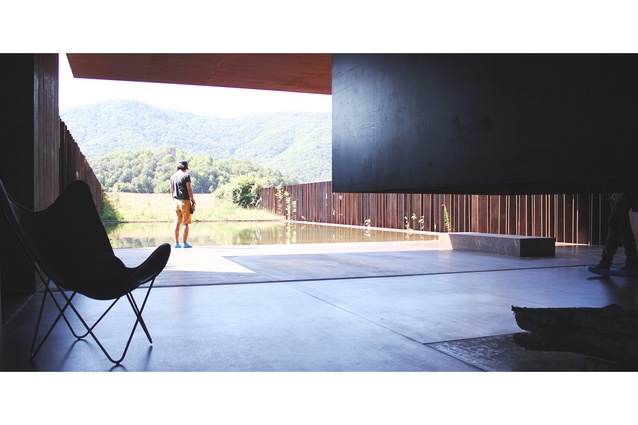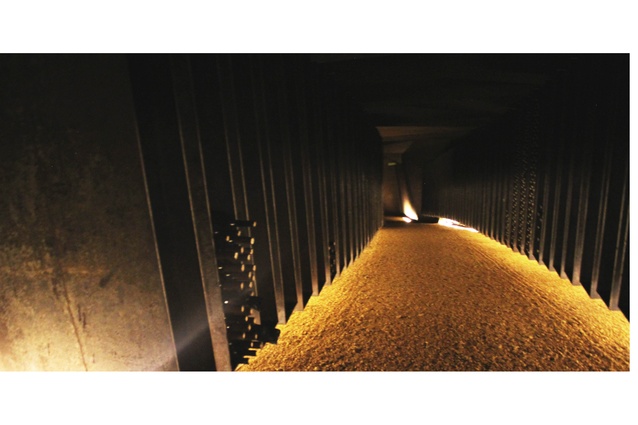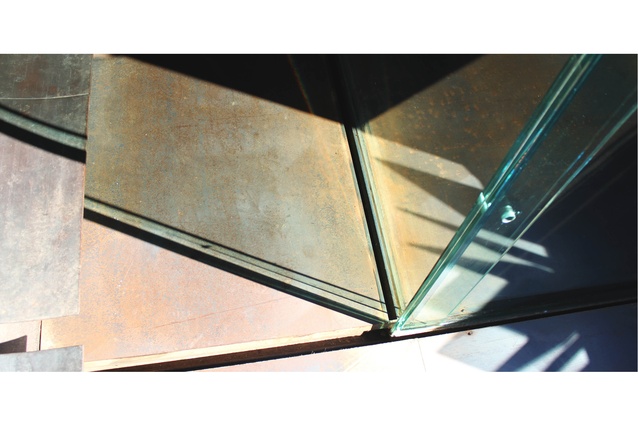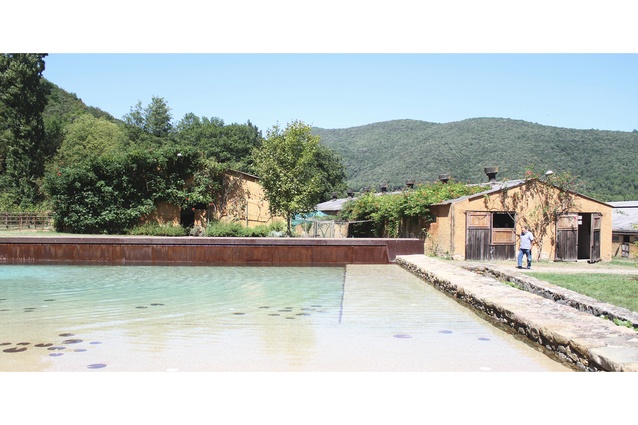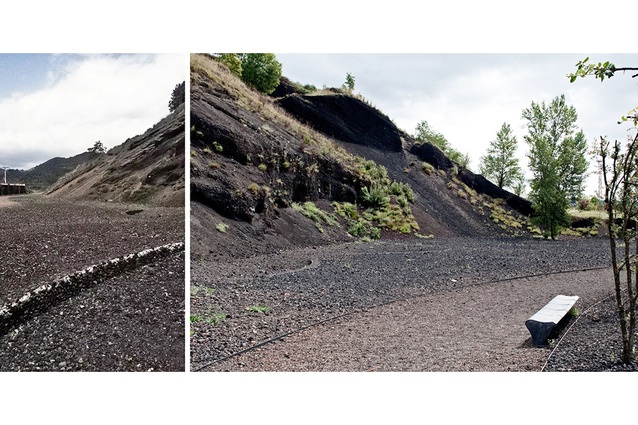Raw essentials: RCR Architects’ LAB·A workshop
Sacha Milojevic writes on his time at 2017 Pritzker Prize laureates RCR Arquitectes' annual summer workshop in Catalonia.
August is a siesta month in the Catalonia.
The designers at RCR Arquitectes in the small city of Olot take the month to relax in constant heat of a late Mediterranean summer. What better time for 2017 Pritzker Prize laureates Rafael Aranda, Carme Pigem and Ramon Vilalta to host 60 students for the annual LAB workshop of architecture and landscape?
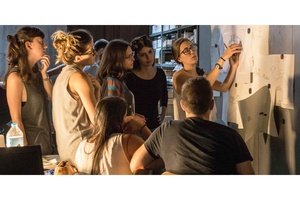
The extraordinary Espai Barberí (2008) is the venue, a metal foundry repurposed into RCR’s atelier. This project, a playground for creativity and invention, was surely a clincher for the visiting Pritzker Prize panel led by Glenn Murcutt.
Last year I attended this annual workshop which will this year be in its tenth edition. Yes, we all enjoyed each others’ company late at night in a mix of broken Spanish and English, enjoying tapas, patatas bravas, Estrella Damm beer, and extra large gins but essentially we were there to learn.
Not only architects and architecture students, but also photographers and scenographers, have come from all around the world to learn from the lineup of Catalan and international presenters: architects, dancers, scenographers, photographers, ecologists and artists.

The International Workshop of Audiovisual and Photography is run by Barcelona-based El Croquis photographer Hisao Suzuki and The International Workshop of Scenography by internationally renowned scenographer Alfons Flores.
On the first day of the workshop of architecture and landscape, Rafael Aranda presented the four studio project options led by invited tutors and friends.
I was lucky enough to work with Igor Peraza Curiel, former director at the Barcelona office of Enric Miralles and Benedetta Tagliabue (EMBT) and coincidently, the final international guest speaker at the in:situ 2017 conference in Auckland on behalf of Tagliabue.
The reputation that RCR has built internationally and their close relationships with fellow professionals has allowed them to grow their Bunka Foundation and workshops, attracting architects (and now fellow Pritzker Prize winners) Eduardo Souto de Moura last year, and Bijoy Jain and Ryue Nishizawa in previous years.
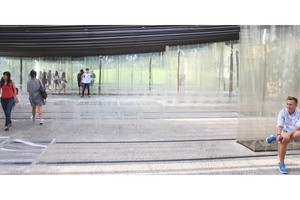
Souto de Moura, a master of the contextual and understated, advocated for ‘architecture where the architect disappears’, a phrase that was soon picked up as a workshop theme.
However, more critical to their Pritzker Prize success is how extensively the RCR trio have worked in and around their hometown of Olot, and the relationships they have forged with those in related arts, disciples and trades. They engage with many local councils and political bodies advocating for quality public spaces.
This involvement extends to some of the clients whom they have attracted – enter Fina Puigdevall Nograreda. Local Michelin Star chef and perhaps RCR’s most important patron, Puigdevall Nograreda is the owner and head chef of the Olot restaurant with rooms Les Cols.
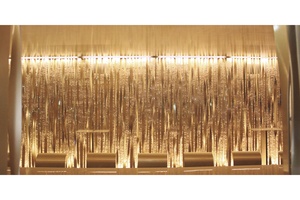
Like the architects, she embodies a deep understanding of the surrounding rich land of the Garrotxa Volcanic Zone Natural Park, fundamental to her local culinary style. As she states on the Les Cols website, “I seek out the essential – to get maximum effect from minimal ingredients, drawing inspiration from nature.”
Puigdevall Nograreda has commissioned some of RCR’s best work, including Les Cols Restaurant (2002), Les Cols Pavilions (2005), Marquee for Les Cols Restaurant (2011), and her own house, Casa Horizonte (2007).
What the chef and the architects share, above all, is the belief that their work must retain and enhance a connection to nature through ingredients and textures, poetics and time, and composition and juxtaposition.
In RCR’s practice, knowing the land and where to site a project is paramount. The mediation with the ground surface and the experience of the elements through dematerialisation follows closely. The phenomenological experience is felt universally, whether it be a novel experience or a feeling basic to our senses.

The use of raw materials celebrates the presence of time rather than resisting it. The mature understanding of the lifetime of a project is founded in the acceptance that all materials will, one day, return to the earth of which they are made.
Earth underfoot and frameless glass with a gap allowing for passive ventilation are the result of viewing landscape and architecture as one – a continuous space. The RCR approach is that sometimes the best detail is none at all.
Spain’s Golden Lion-winning exhibition ‘Unfinished’ exemples and celebrates this mode of thinking. Architecture should not be the product you buy from the starchitect. The challenge posed to RCR now is how retain their values working on bigger projects with larger budgets, in countries with extreme neoliberal agendas like Dubai.
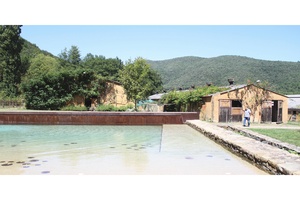
There is much we can learn from Aranda, Pigem and Vilalta which is directly applicable here. In New Zealand we have a kind of fear of putting architecture onto our landscape. We must ensure we have quality projects which enhance our landscapes and the experience of them, in the same way that a beautiful landscape is seen as a great advantage for a project.
RCR’s very understated project on the slope of Montsacopa, one of the four volcanic cones in Olot, reminds me of the opportunity of reinstating a meaningful relationship with the rich cultural landscape of our volcanic cones and stonefield sites in Auckland. Cones and pā sites like Maungawhau come to mind especially now that vehicle access is restricted to the cone, where a history of settlement, use and occupation lies largely unappreciated.
The RCR LAB A International Workshop of Architecture and Landscape X, Audiovisual and Photography V and Scenography II will be held this August.

